What Went Wrong With the Costumes on Season Two of HBO's The Last of Us
The hidden reason why the costumes of HBO's The Last of Us season two had audiences struggling to believe the characters were living in the apocalypse.
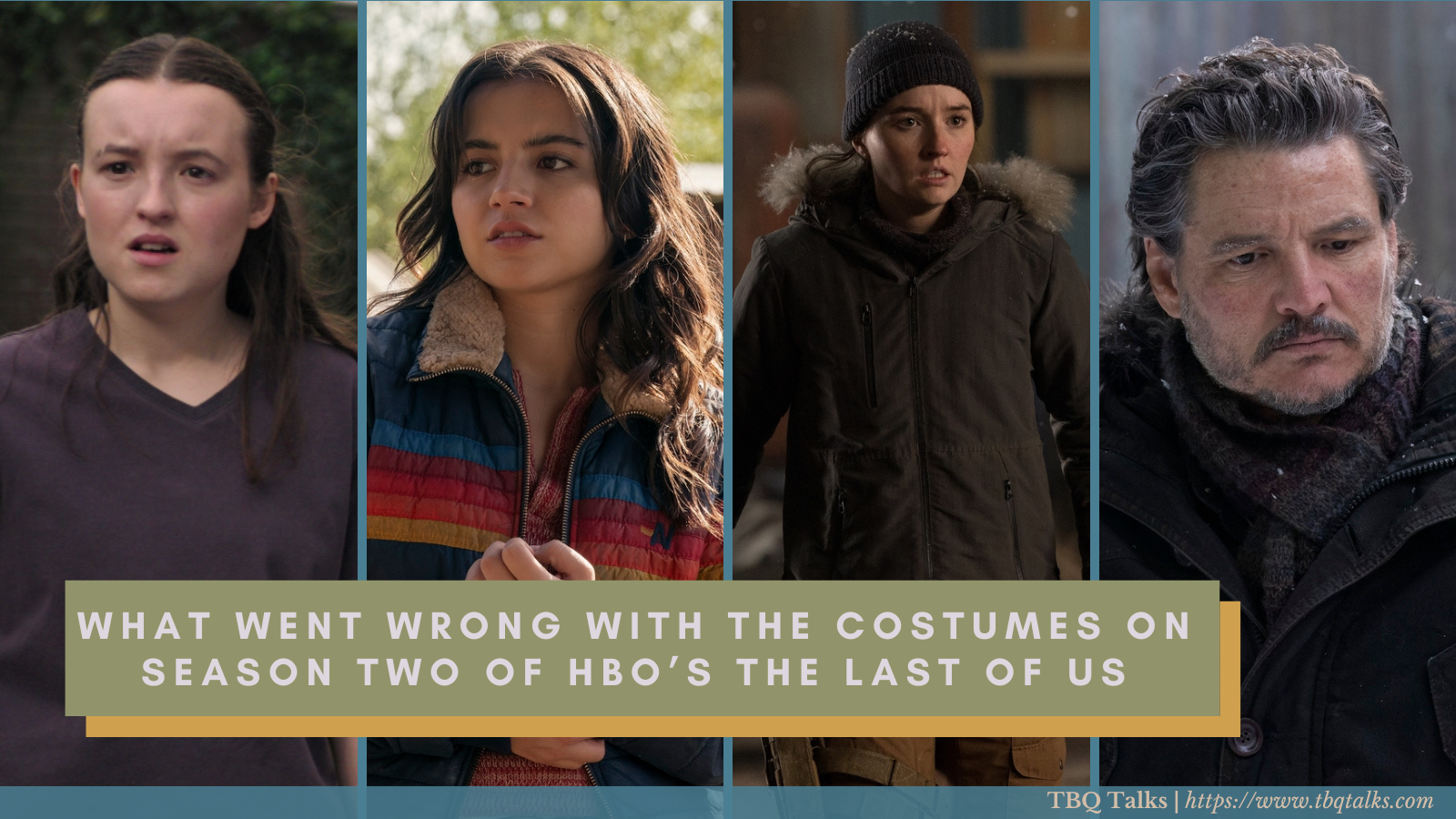
Warning: The following contains spoilers for HBO’s The Last of Us through season two. Read at your own risk.
Introduction
Season two of HBO’s The Last of Us brought mixed reactions from the audience. On the negative side there were multiple things, many of which were from the point of view of people in desperate need of a life and thus whose opinions aren’t even going to be repeated here.
But on the more value neutral side of things one of the opinions from the audience and professional reviews alike was that the season didn’t feel right. It was a show taking place in an apocalyptic world and it didn’t seem like the characters lived in the apocalypse. Some people couldn’t put their finger on why. Others had an inkling it might have something to do with the costumes. Namely, that the costumes were too clean.
As someone who is a wee bit of a costume nerd I want to dive in to that opinion. Because yes, the fault - much as there is fault - does lie in the costuming. But I want to push back on the idea that the costuming in season two of HBO’s The Last of Us was badly done. Instead, it’s not that Ann Foley and her team did poor work. It’s that something snuck in to the costuming which created messaging they either didn’t intend and/or were unable to stop. And I have a theory about what that something is.
But first, let’s talk about what costumes do.
How Costumes Tell the Story
As I’ve talked about before the bare bones role of costumes is to give a vague idea about your characters: Where are they? When are they? Who are they? A police officer in a modern day procedural is not going to wear the same clothing as a member of the aristocracy in an early 18th century romance.
However, costumes can do so much more than that. To that end, let’s look at this picture.
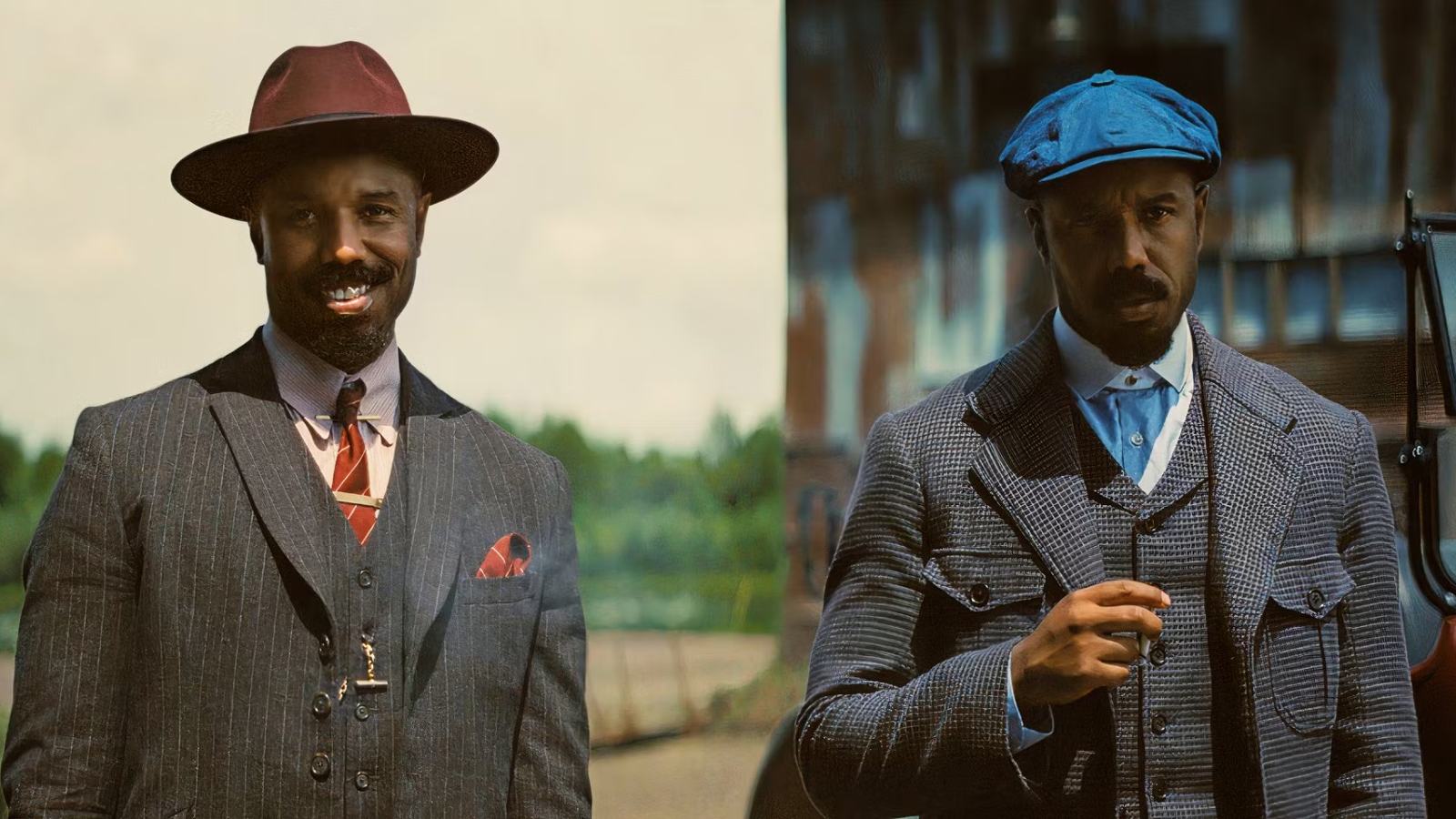
Let me be clear, comparing anybody to Ruth E Carter is deeply unfair. She is a god of costume design. She sets the bar so high there are few working today who can come even halfway to what she does.
That being said, because she is so good at costume design she is the perfect person to go to for an example of everything costumes can do. There isn’t a stitch on a Ruth E Carter design that doesn’t have multiple layers of meaning connected to the story being told. Likewise this is two characters played by the same actor, so we’re removing that factor from the equation. Everything you’re being told here is based on the visuals the behind the scenes team brought to the story.
So, with that in mind, look at that picture from Sinners. It doesn’t matter if you’ve seen the movie (and don’t worry, there’s no spoilers to be found here if you haven’t yet). Look at the picture and think about what you see?
Probably one of the first things you notice is color. One of these men is in red, one in blue. Frankly if the only thing you pick up on about these costumes is the color that’s fine! Because one of the jobs being performed by these costumes is to help you tell which version of Michael B Jordan is which. If you see red, that’s Stack. If you see blue, that’s Smoke. Even if you can’t remember which name goes with which color you’ll at least be able to know blue is one, red the other.
Now this is a Ryan Coolger movie which means color is never just color. Again I won’t get into spoilers but when you color code a character and you’re doing your job right as a production team then every time that color shows up it means those things are connected and mean something. When red shows up in Sinners it means something and is somehow connected to Stack and vice versa. Ditto for blue and Smoke.
(Longtime readers will now recall my many many rants about the muddled use of green on Loki.)
Keep that color thing in mind because it’s going to come up with HBO’s The Last of Us.
Let’s go back to the picture. What do you feel about these two men? There’s no wrong answer here. Purely vibes. To help, what time period do you think they’re from? What do they do? Even if you’re not sure what job they have could you make some ballpark guesses? Are they likely to be farmers? Firefighters?
Let’s get even more vibe-y. Which one of these men seems more approachable than the other? Which one of them feels like he might be more clever? Who feels more outgoing? Who feels more guarded? How do you think these men handle negotiations? Fights? Dates?
You get the idea. The point is that even if you don’t know enough about fashion to be able to pinpoint that one of them is in an Italian styled suit while the other is in an Irish styled one, or to give the specific name of the cloth used to make their suits and why the texture of the cloths chosen are different, you can feel that something is going on there.
(And yes, in a Ryan Coolger/Ruth E Carter teamup all of those things absolutely have meaning. To the point that I’m not even going to say what meanings because I promised there would be no spoilers. But the fact that clothing details could give spoilers tells you one of many reasons I keep saying Ruth E Carter is a god.)
Now you might argue that body language is telling a lot. Yes, both characters are played by Michael B Jordan but he’s holding himself differently. Which is correct. But costumes help actors figure out that movement. Michael Shannon put it thusly:
“The costume is a huge thing […] When you put your costume on and you get your hair and your makeup done and you stare in the mirror you feel like a different person.”
This comes up again and again. Oscar Isaac figured out the movement for Steven Grant as soon as he did the first tryouts of Steven’s costumes. Michael B Jordan figured out how Stack would hold himself when he put on Stack’s hat for the first time.
The link between costume and character is crucial. The clothing informs the actor and informs the audience. This then raises the question of what is the audience being told?
What the Costumes on HBO’s The Last of Us Season Two Got Right
I want to be clear that Ann Foley and her team had a herculean job on their hands and I very much feel they rose to the occasion. You want to talk about things they got right, let’s start with how in episode two of this season they had to come up with over 600 outfits. Again: for one single episode.
On top of that they were dressing infected and humans alike, and Ann Foley and her team set themselves the even higher bar of thinking about what each infected was wearing. Per Ann Foley:
"We wanted each one to have a backstory and make the audience sense the humanity in them that was once there with their clothes.”
Dude. DUDE. Do you understand the level of work that entails? The level of dedication to do it for hundreds of people? Then they did it again in the fourth episode while keeping in mind that Seattle based infected would look different both due to local fashion and the humidity (whole lot more infected wearing grunge band shirts in Seattle, for example). To say nothing of how they had to work with the SPFX team to get the clothes to integrate with the prosthetics the performers were wearing and convey the idea that the infection had transformed their bodies and clothing alike.
Now you could argue that dressing infected #582 with the same level of detail as #8 is silly. Why spend as much time on a character who at best might be a dot of color in the far background of a shot for less than a frame as you do on one who might grab one of the protagonists in a closeup? And this is true. While I haven’t seen any interviews with Ann Foley where she mentions it (and believe me, I have been devouring every interview with her I could find about this season), I can guarantee there was time and budget saved on how much detail was given to those they knew would be seen clearly. That’s just how these things work.
But that doesn’t mean you skimp on the detail for others. Because, again, costuming is as much about feeling for both performers and audience as it is about what is seen. An audience member might not see infected #582 but an actor might still need to run away from them while conveying the horror their character feels at seeing this creature that’s no longer fully human.
Likewise the internet is littered with examples of things in costumes which ruin the audience’s immersion. Which we are getting to when we talk about issues with costumes in season two. But in turn that goes to show why it was important for Ann Foley and her team to be as dedicated as they could to every single performer on set.
There are people out there who made weeks’ worth of memes about a single frame of Bella Ramsey taken out of context. Now these people desperately need a life, but it still goes to show there are those dying to find a single error. Ann Foley and her team came in in season two. They knew this level of scrutiny would be on them, they knew they needed to go bigger than season one, they still rose to the challenge. That’s amazing.
I also want to mention the fact that you cannot find a moment when Ann Foley doesn’t give credit to her team. Her Instagram is one of many places you will find her shouting out every member of her team, sometimes by name when she can, and as a whole when she can’t. She makes it very clear this was the work of many hands and I love that.
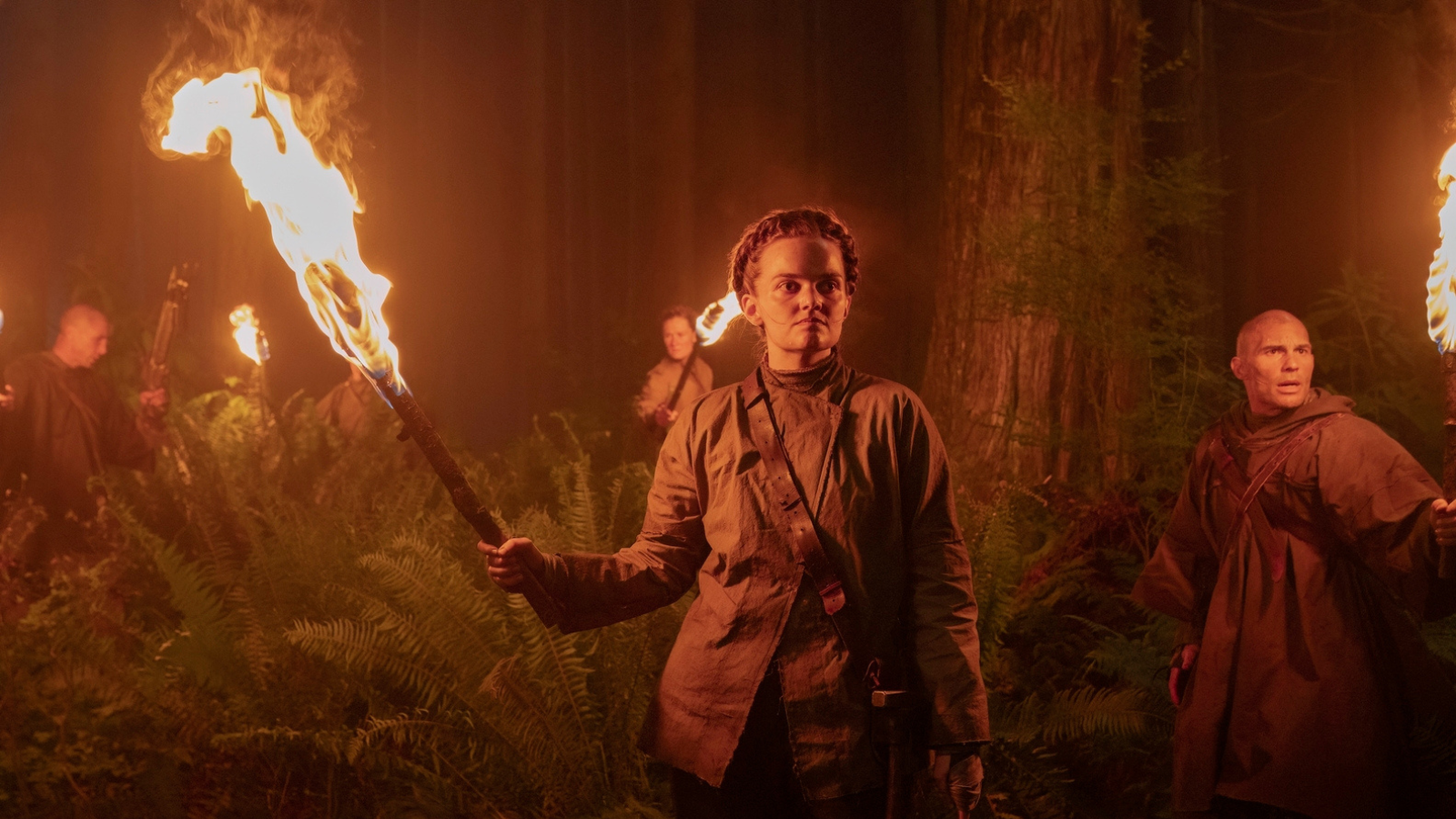
Another thing Ann Foley did which I loved was the costuming on the Seraphites. She looked at what was done in the game, went back to Naughty Dog, and was basically like hmmm, yeah I’m not seeing them finding an abandoned raincoat factory. She argued that the Seraphites, based on their philosophies of doing things themselves, would likely scavenge material from abandoned boats and make outerwear out of that.
This is the sort of thought process I adore in costuming. It’s a level of detail you don’t have to do. I would certainly not hold it against a TV show for saving time and money on this. But if you think of it and implement it that’s amazing. Love it. Zero notes.
Now there’s a catch here where the fact that she thought of this means that, well, she thought of it. So keep this in mind when we get to what went wrong on the costuming. Because this particular detail shows that when it didn’t happen with the costumes, that was done on purpose. But we’ll get to that.
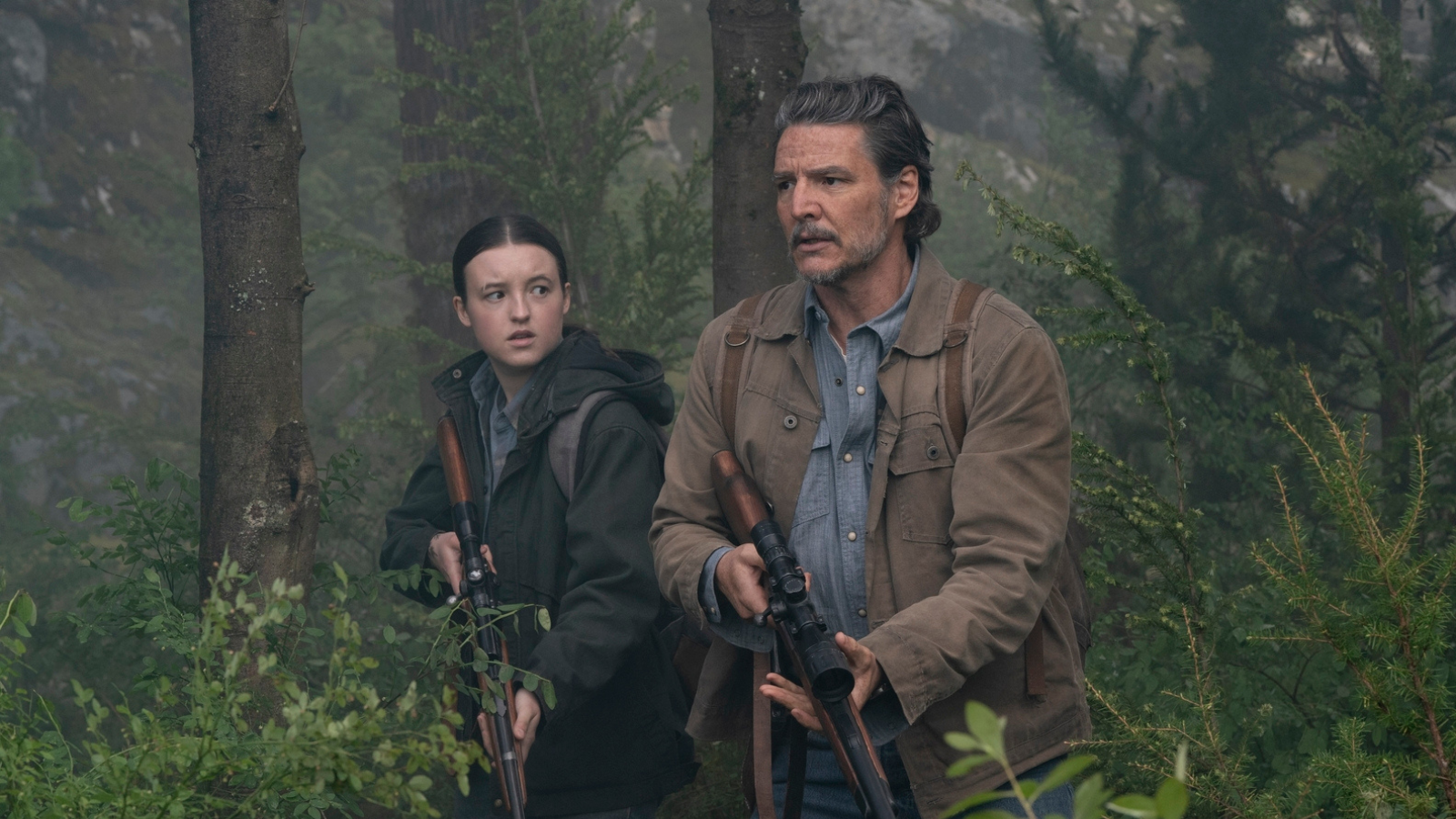
Another thing Ann Foley did great was color story. We talked about this earlier when I said how in Sinners when you see blue that’s connected to everything blue, up to and including the character of Smoke.
In season two Ann Foley used color and patterns to connect Joel and Ellie. Per Ann Foley:
“Then as Ellie progresses, the palette gets a little bit darker, and we start moving into this blue palette that you see in most of Season 2. That has echoes in Joel’s palette, which gets more blue as he gets a little darker and a little sadder. These two people are on a very similar journey emotionally and I wanted their clothing to reflect that.”
Note how Ann Foley is pointing out the thing I’ve been stressing: the colors are telling a story. They are connecting these characters for the audience and telling you that there are parallels happening even if the characters themselves would like to deny that. Whether or not every member of the audience can point to the progress of the color blue in Joel and Ellie’s clothes, the feeling of connection created by that color is still there.
There’s also times when color can simply be practical - the “Smoke is in blue, Stack is in red” factor. For example, during the first two episodes Tommy wears a coat with red in it. That was to help spot him in the crowd during the infected fight in episode two. Doesn’t need to be more than that and that’s fine! TV is a visual medium. If you can’t see the characters, you might as well be watching Game of Thrones.
Finally there’s silhouette. But here’s where things get awkward. Because Ann Foley talks about changing Ellie’s silhouette from baggy to streamlined to help indicate that Ellie is growing up over the course of the flashbacks in episode six. Which is great! Baggy clothes are a great indication of childhood! Ellie in season one wore a loose fitting hoodie and jeans rolled up at the legs when we met her, a perfect encapsulation of the gangly body of a 14 year old. (Shout out to season one costume designer Cynthia Ann Summers for that). However, much like with the brilliance of using repurposed ship’s canvas for the Seraphites, the fact that there was thoughtfulness put into silhouette means there was thoughtfulness put into silhouette.
And here’s where we start talking about what went wrong even though so very much went right.
The Secret Visuals That Betrayed the Costumes in HBO’s The Last of Us Season Two
Costume wise, the theme that came up again and again in season two was this: the clothes are too clean. There were articles, posts on social media, essays, TikToks, discussion threads, and more.
Again and again was the complaint: Too clean. Clothes are too clean. These people do not look like they are living in an apocalypse. Clothes are too clean and also the hair is too nice. It’s distracting and it’s ruining immersion.
All of which I agree with by the way. All the way to the final episode of this season I was distracted by how nice the clothes were and by Dina’s well kept beachy waves. (Also shout out to the writer at Allure who pointed out that not only was Dina’s hair far too nice but Gail’s particular shade of hair dye wouldn’t exist in the apocalypse either.)
The internet is the internet, of course, and as I’ve said before there were a ton of opinions about what was wrong with season two that don’t deserve to be given the light of day. But what I want to point out here is that by and large this complaint is coming from people who liked the game and the show and want it to succeed. Moreover, notice how the people who defend the show tend to all have the same argument: there’s reasons the clothes could be clean.
Note a key detail there. They can be clean, not that they aren’t clean.
So exactly nobody is coming away from seeing these outfits and going what the hell are you talking about? Check your TV settings, the clothes are obviously filthy! The clean clothes are an observable and fairly universal thing.
Which is weird, because remember me mentioning Ann Foley shouting out her team? She constantly shouts out the breakdown team in particular, aka the folks who took nice clothing and made them look not so nice. Again and again on her Instagram she has examples of outfits that were created and then sent to the breakdown team. Here’s one example of Joel’s parka, which was made in house.
Here’s Ann Foley talking more about the breakdown process:
“It depends on what it is. For example, for a lot of the Carhartt pieces we were using, I would send that stuff out to a stone washer first to really break that down because Carhartt is built to last. So I wanted to give my team a bit of a head start, and then they go in and they start painting in the dirt and the aging and try to give it a layered textured look.
“And also using things that aren't going to wash off if we have to send something out to be dry cleaned. Everything needs to be permanent. So yeah, there's a lot of sanding, and there's a lot of painting and what I call spraying into things where they'll take a dye and an airbrush and they'll just spray into it to give it that layered textured feeling.”
There’s a lot of details in this quote I’m going to come back to, but for now suffice it to say it’s not that they skimped on the idea of making the pieces not look new. This is a pretty detailed process! Based on Ann Foley’s multiple interviews there was never a point where they grabbed something straight off the rack and went meh, let’s not even bother washing the sizing out of it. Throw it on Bella and call it a day.
Okay, so what happened? Why do the clothes still look new? Is it production? Clothes that look fine in real life had details hidden by color grading before the episode aired?
Sadly no. Because when you look at behind the scenes footage and pictures you see that nope, not the case. If anything the color grading should have made them look dirtier.
This is where I want to pause and make it clear that first and foremost in some cases it’s not only fine but advisable for the clothes to look clean. Jackson is meant to represent the closest thing to paradise that anyone can get right now. Clean clothes and hair are a perfect visual shorthand for that.
Moreover, it even works in the worldbuilding of the show. Jackson has electricity and running water. We’re told back in season one they’ve got a working laundromat. Now I’ll dispute the likelihood that they ever find detergent that’s still in a useful state, but as I explained in bonus content for paid members,* if you’ve got water, ash, and urine you’ve got everything you need to wash clothes. Throw in a little fat if you want to get fancy and make actual bars of soap before you get started but otherwise you’re good to go.
*(Shameless plug for anyone who’d like to support this site by signing up for a paid membership. Thank you!)
So Jackson having clean clothes is totally fine and not a problem. Likewise for Abby when she’s in the WLF base in episode seven. These are locations which represent having the facilities to sustain life. Clean clothing indicates that.
All right, so what’s the problem? Why are people still bothered by the clothes?
I don’t have any secret inside scoop here. I’m not saying this is my magical super power kicking in to give the definitive answer. But I do have two very strong suspicions of what went wrong.
Problem One: Fit and Silhouette
Remember how I said Ann Foley talking about silhouette would be awkward? Because one of the problems with the clothing HBO’s The Last of Us season two isn’t about cleanliness, it’s about look. I think people are glomming on to clean as the word to use because the average viewer doesn’t have an obsessive costuming background to be able to articulate the specific reason a costume doesn’t feel like it belongs in the apocalypse. They just know it feels wrong. In other words, they can’t name which one of Smoke and Stack has the Italian suit vs the Irish, but they know those suits don’t evoke the same feelings.
To which we may as well focus on the character who embodies everything wrong with fit and silhouette. These problems show up elsewhere in various forms, but there’s one character who has them all.
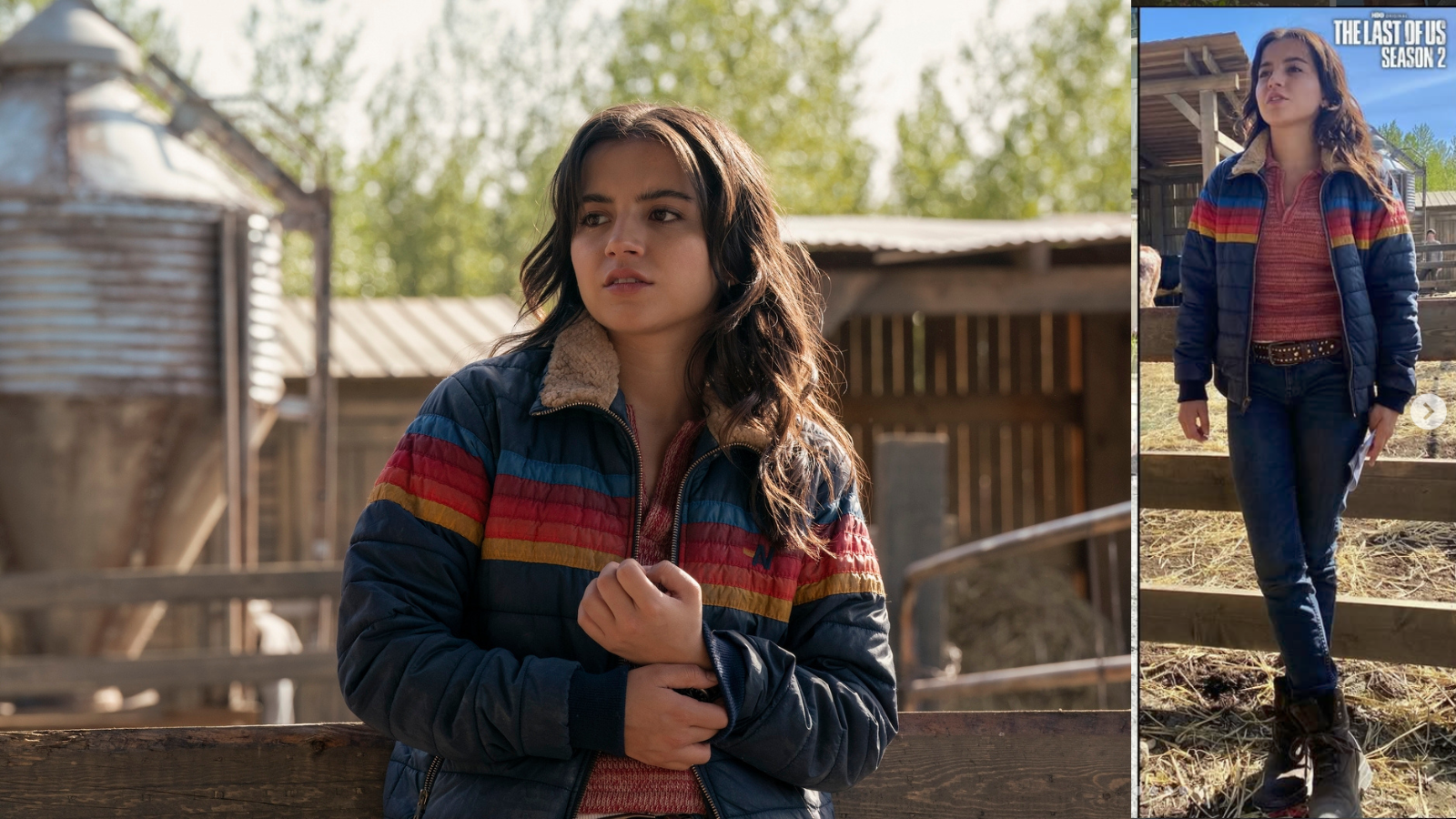
With her clean hair, beachy waves that never wilt, and clothes that seem right off the rack, Dina exemplifies everything that made people look at season two and go these folks aren’t living in the apocalypse, they’re living in a CW show.
CW shows were cited specifically by some fans. Namely, it was the idea that things felt lighthearted to near sitcommy. More like a teen drama with love triangles than a gritty survivalist horror.
It’s not the clean clothing that’s doing that. It’s that Dina, one of our main characters, looks like she’s stepped out of a CW teen drama. And what’s doing that is her fit and silhouette.
Ann Foley had great instincts. She put together a mood board for Dina where her color palette reflected how she is a bright and lively person compared to Ellie. She also kept in mind that the world stopped in 2003 and thus that’s where fashion would freeze as well. She was mindful enough of this to be cautious about using Dina’s signature Aviator Nation jacket, which wasn’t made until 2006, but got the all clear from Neil Druckmann and Craig Mazin to use it.
And if it was just the jacket it’d be fine. Sort of. The jacket alone has an issue which I’ll get to when I explain the second thing that went wrong with the costumes in season two but as a concept a 2006 jacket is fine.
But the jacket isn’t alone it’s part of an outfit. An outfit which first and foremost fits Dina like a glove.
Yeah no. Not in the apocalypse. Sorry.
If casual clothing has stopped being manufactured in 2003 then everything everyone gets that looks like casual clothing is scavenged. Do you know how hard it is to find a good fitting pair of jeans today? Do you think it’s easy for even the Dinas of the world to walk into a single store in 2025 and come out with a pair of jeans that fit their curves exactly and hit their waist in just the right spot? Now how likely is that to happen twenty five years after the apocalypse has occurred?
Now multiply that by every piece Dina is wearing. Now multiply that by every character in the show - which is in fact every character - who had a well fitting garment. If it was just Dina who had well fitting clothes it’d be okay. It would be a mark of her character that she spends what time and/or capital she has to get clothes that fit her well, same as Joel bartered for coffee beans. But when it’s everybody it’s a problem.
We talked earlier about Ellie’s silhouette. Yeah, as she got older she’d be more likely to find clothing that fit her since she’s no longer in the awkward stage of adolescence. But that doesn’t mean Ellie would find clothes that fit. Bella Ramsey even discussed this in an interview, which we’ll get to in a sec.
Of course we can come up with explanations. There can be tailoring in the apocalypse the same as there can be laundry. But you would not have an apocalypse where everyone spends time and resources getting their clothes exactly tailored to their bodies. The barest research into history will tell you that. You don’t even need to go further than a quick refresher on Make Do and Mend to give you enough inspiration to make costumes that are close enough to feel right.
But come on, I can hear people protesting. That’s a silly detail! Who pays attention to fit?
Well how about Jany Temine, costume designer for Black Widow?
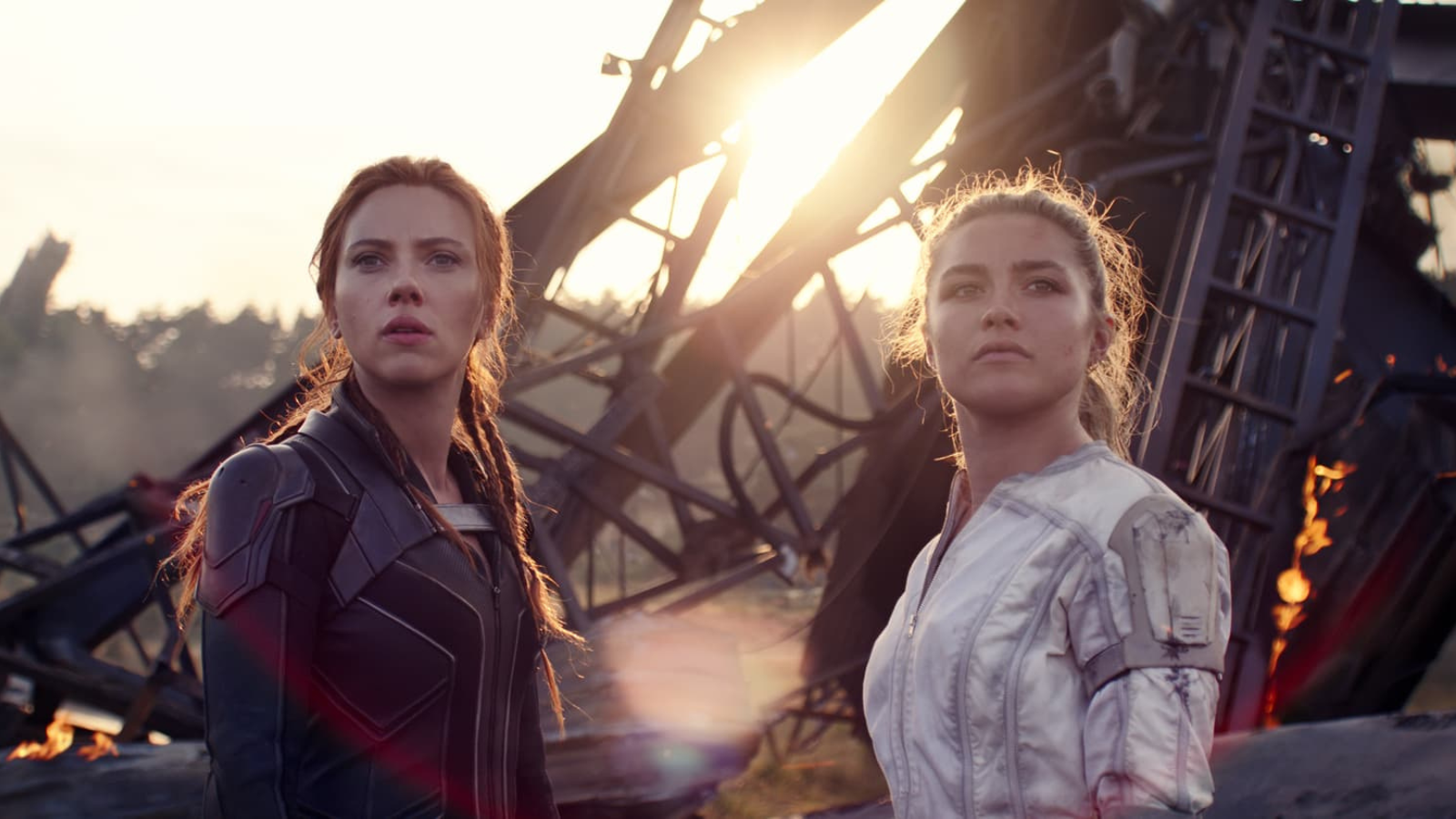
In the Black Widow movie Yelena’s white outfit fits her loosely because she picks it up on the go. It’s not an outfit made specifically for her, so it doesn’t fit her like a glove. This in comparison to Natasha’s white outfit which does.
Does everyone in the audience specifically clock that Yelena’s outfit is baggy? Maybe not. But they can certainly pick up on how it feels like Yelena is scrambling to try to define herself in the world now that she’s no longer brainwashed, while Natasha has a stronger sense of self. Baggy vs well fit helps convey that.
Also note how the picture above is of Natasha and Yelena after the climactic battle and their hair is mussed. You got Scarlett Johansson and Florence Pugh still looking gorgeous and marketable, but also looking like they’ve been through some shit. Nobody walked away from this movie and complained that the costumes were too clean.
We’ll talk more about the clothes on The Last of Us being fine in a second, but let’s circle back to the other issue with silhouette. Which is that Dina’s outfit not only fits her well and looks great, it looks great for the early 2000s.
Wait, why is that a problem? We acknowledged that fashion production stopped in 2003, right? And that we’re okay with a little wiggle room on that year if it fits the character?
Yes, all that is good. But the missing piece, the thing that audiences can feel even if they can’t articulate, the “Why does this feel like a CW show?” of it is that Dina is dressed like she knows early 2000s styles.
Dina doesn’t just look good, Dina looks perfect if she lived in the early aughts. Her outfit is so spot on for early 2000s fashion that it’s echoed again and again in this list of celebrities from the time period.
Just scroll down that page. What do you see? Low rise jeans that hit where Dina’s jeans hit, shirt styles that match her shirt style, chunky leather studded belts that look like her chunky leather studded belt, even Britney Spears wearing a jacket that could be a sister of Dina’s puffer coat. All that’s missing is the pointy shoes and a selection of shirts that expose her belly.
Dina shouldn’t know how to dress like this. She was born after the apocalypse. She wouldn’t know how to style clothes this way.
It’s been brought up on multiple occasions that the younger generation of The Last of Us doesn’t understand pre-apocalypse anything. Fashion especially has been shown to be something they side eye and question why people would care about it.
One can argue that maybe Ellie, as a lesbian who tends to the butch side of things, would not be particularly inclined to see the appeal of hyper feminine clothing no matter when she was born. But what we’ve seen is that those artifacts of the fashion industry are few and far between. Maybe you stumble across a magazine here and there and maybe it’s more about clothes than it is about hair or makeup, but it’s all paper based so good luck.
Dina was born after 2003. She has no basis for knowing these clothes. Even if she stumbled into a fully stocked Forever 21 from pre-apocalypse she wouldn’t know to grab the chunky belt with the low rise jeans and all the rest. She would grab things that were useful and that she liked, but she would match them in a way that was her style, not Reese Witherspoon’s.
The audience may not know off the top of their head that Aviator Nation made that jacket in 2006, but a good chunk of them know what early 2000s fashion was as a concept. It’s enough for them to look at Dina and go nope, 25 years into the apocalypse and that outfit doesn’t feel like survival horror. Because it isn’t, it’s pop culture fashion.
Which brings us to our second problem.
Problem Two: The Clothes Don’t Show Wear When They Should
When people talk about dirt what they mean is the clothes need to look lived in. The audience wants to see that time has passed. Season one costume designer Cynthia Summers talked about this. When discussing Joel’s signature plaid shirt she mentions “It starts off fairly clean because it’s worn by Frank. It gets worse and worse and worse.” likewise of the other clothes that Joel and Ellie get from Frank’s storage, “Even though these items were newer, they still had to be overdyed to appear faded over the last 20 years and to show fold marks from being stored in a box for two decades.”
Looking at Ann Foley talking about the costumes of season two, what comes up is that yes, the clothes were sent to the breakdown team. However, the breakdown team either made the clothes fit for infected prosthetics and/or ran the clothes through an overdying process to fade them.
What you don’t hear about is the clothes being worn down. No bagginess, no getting worse, nothing even remotely like fold marks.
Ann Foley thought about it! In talking about season two and Jackson specifically she says:
“The clothes aren’t as dirty as season one but they’re lovingly worn in because everyone’s taking care of their clothes You wear your clothes until they literally fall apart.”
Which is 100% true. Like I said earlier, make do and mend. Even when you’re not dealing with rationing before mass manufacturing humanity clothed itself by reusing over and over and over again. Brand new outfits where bought or made when possible but then those outfits would be transformed into new outfits to keep up with changes in fashion and body (like becoming pregnant, as one example). Holes were patched. Socks were darned. Garments would be made with built in allowances for needing to change seams and hems.
If things wore out too much to be a garment you’d turn those scraps into something. Quilts and rag rugs are great uses for them. When scraps get too worn down and you send them out for recycling to be turned into cloth all over again - not great cloth, but “shoddy.”
But where is this in the show? Where’s the wearing down on elbows, knees, and in some cases inner thighs? Elle can doodle on her sneakers to show personality but bright and colorful Dina doesn’t know how to make or barter for some visible mending?
Abby and her team go from Seattle to Jackson on foot in the dead of winter - something Google tells me is a thirteen day trip in non-apocalyptic summer of 2025 - and their clothes look fine? Nobody snagged a loose thread on a tree branch? Abby didn’t get a tear in her pants after all that falling into a pile of infected?
Ditto Ellie and Dina traveling to Seattle on horseback through a downpour? Even if you use the Google estimate of 3 days by bike as a translation for the speed of horseback it’s still ridiculous that they show up in Seattle without a hair out of place and none of their clothes showing signs of mud or even some creases thanks to the weather.
And it can be done! For comparison, here’s a picture from The Walking Dead. It’s even season two for a fair comparison, one infection based apocalypse to another.
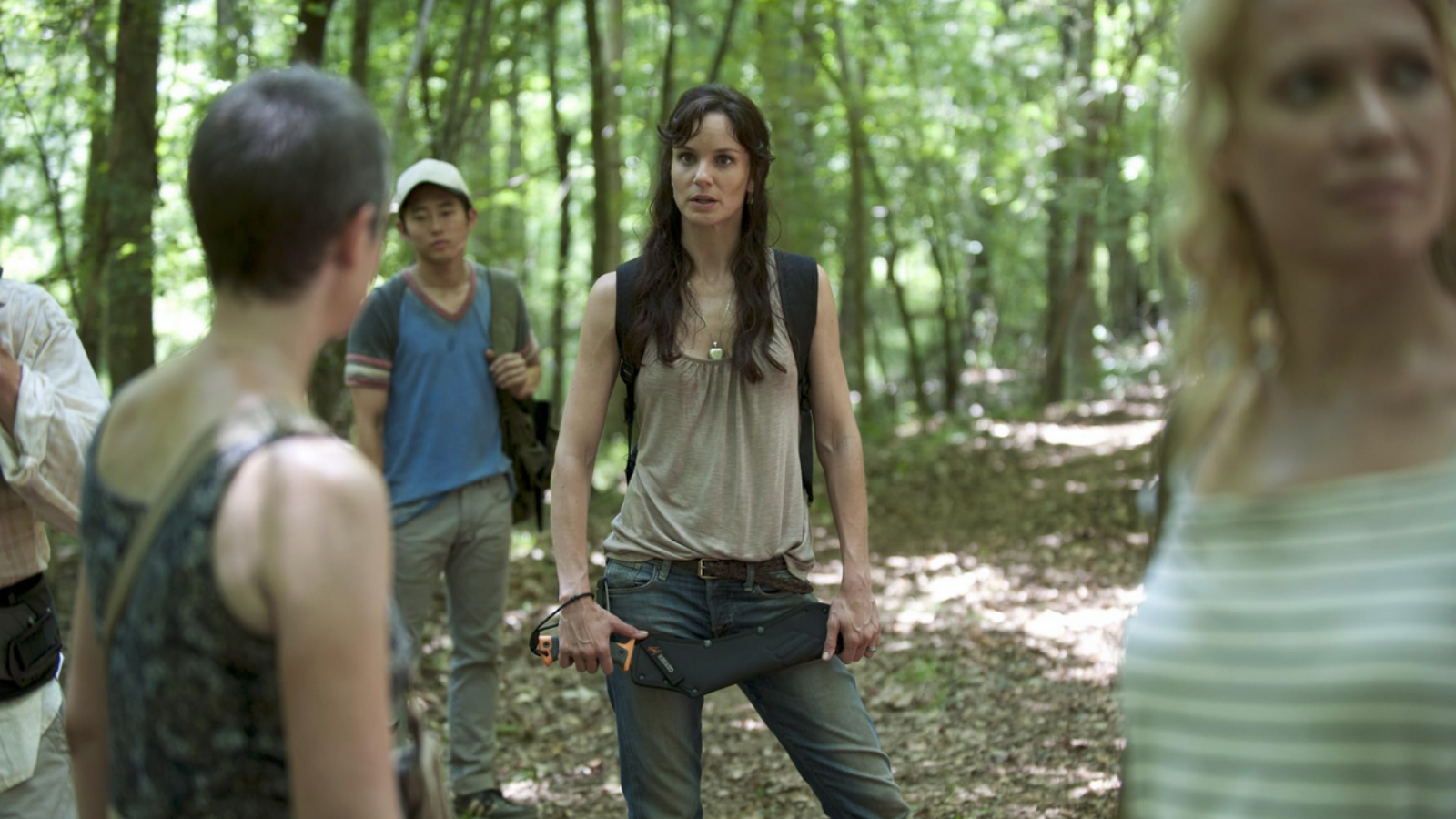
Look at this picture and what do you see? First up, baggy clothing. It fits the actors and does so in a flattering fashion, but still looks like these are clothes each one of these characters got from wherever they could. There’s nothing here made to fit each character like a glove because nobody can find that kind of garment in the apocalypse.
But moreover, note how worn the clothes look. They’re not only baggy but limp. These clothes don’t just fit loosely because they were never skin tight, they fit loosely because they’ve been worn. Bodies have been moving around inside of them. That stretches out a garment. Maybe those shirts and pants had fewer wrinkles originally but now they look like people have actually used them.
This then combines nicely with how yes, the clothes show some dirt. Laurie’s tank top there in the center feels like it was probably closer to white when she originally got it. Her jeans were probably not that brown along the thighs. But it’s the baggy limpness that sells the idea that her and everyone else’s clothes are clothes that have been lived in. The limp hair along with it helps seal the deal.
Granted, some of this is due to how filming in Atlanta humidity means you don’t have a choice about hair and clothing looking wilted. But the point is that it does. Nobody came out of season two of The Walking Dead complaining about the clothes being too clean. (The farmhouse storyline going on way too long is another matter…)
Okay, you might say. But HBO’s The Last of Us has an issue that The Walking Dead didn’t, which is continuity. By the end of season two we know that season three is going to revisit the exact same time period from another point of view. That means you need to be obsessed with continuity when you film the came characters from other angles, right?
Sure. But then here’s HBO’s The Pitt. It takes place in the span of 15 hours in real time. That is a continuity nightmare. But even so what do you see?
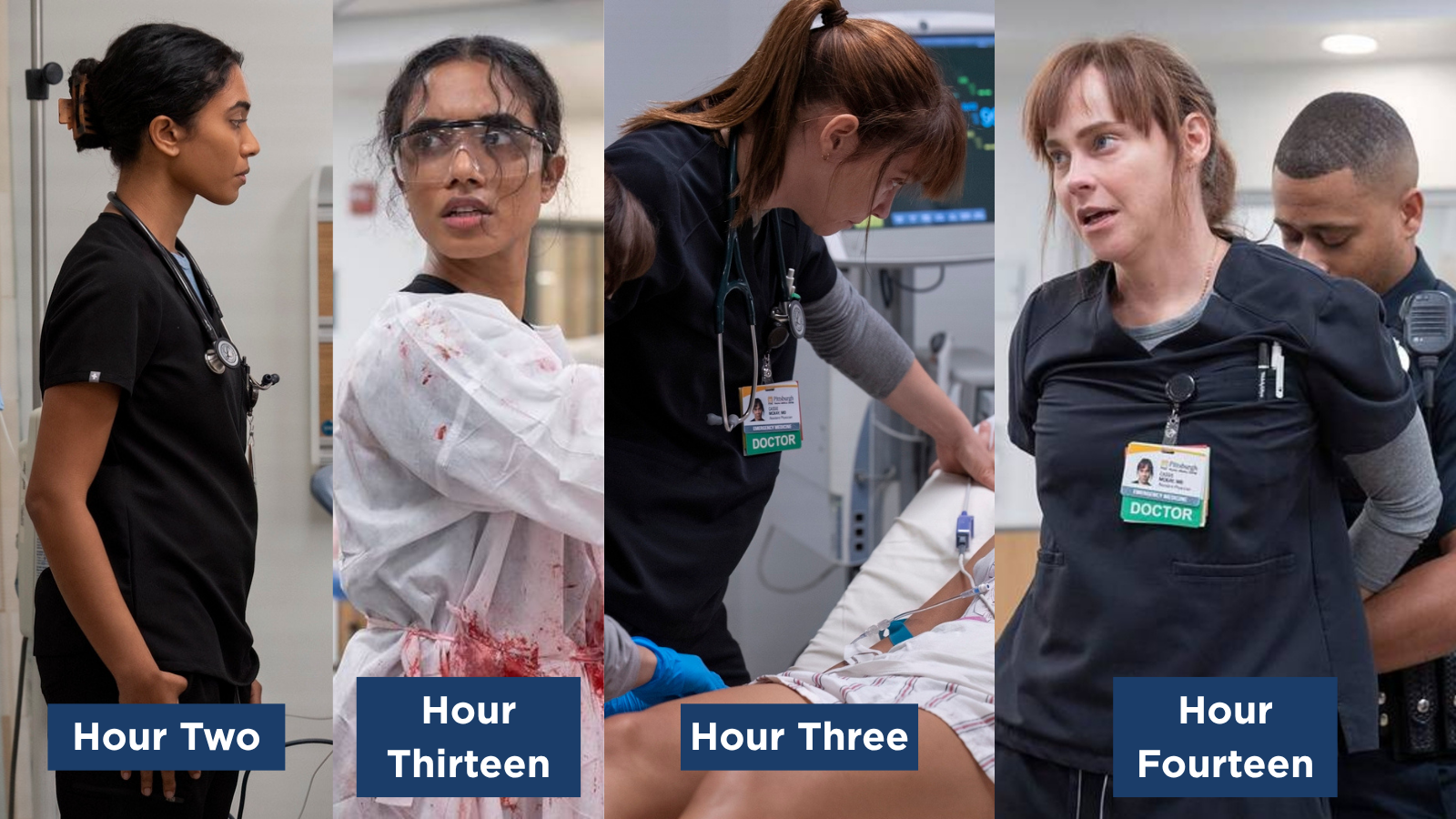
Even if the characters can change into fresh scrubs, they still look like they’ve been through a hell of a day. On top of that, Supriya Ganesh and Fiona Dourif and the rest of the cast, though they are all unfairly good looking people, look the part of people who spend their work time in an overcrowded and underfunded emergency department. In this specific example Supriya Ganesh comes the closest to looking the most Hollywood glam, but even so we’re seeing her hair put up with an alligator clip easily found at the nearest drug store.
Plus both the scrubs seen on Dr Mohan and Dr McKay, though undoubtedly tailored to the actors’ bodies, still show bagginess and a lack of proper fit. Note how in the last picture we can even see how Dr. McKay’s scrubs fit so poorly they are tightly stretched across her chest to the point restricting her movement along with those handcuffs she’s being put into.
As with The Walking Dead, nobody came out of watching the first season of The Pitt and said the clothes were too clean. If anything the refrain again and again was that The Pitt felt realistic. To the point that it was almost jarring to see the actors in interviews because costumes, hair, and makeup on The Pitt styled them so well to seem like average folks doing their best in a difficult environment.
So it’s possible to do! You can be a TV show, you can need to make actors look good, you can need to be aware of strict continuity, and still make them look dirty and worn down. Why aren’t we seeing this dirt in season two of HBO’s The Last of Us?
There’s a kicker to this, though. And it’s that some characters in season two do look dirty. It was fairly early on that the complaints of too clean clothes started, so when I watched the show I took notes on when dirt appeared. And it did appear! Noticeably so! For example, in season two’s flashback to FEDRA:
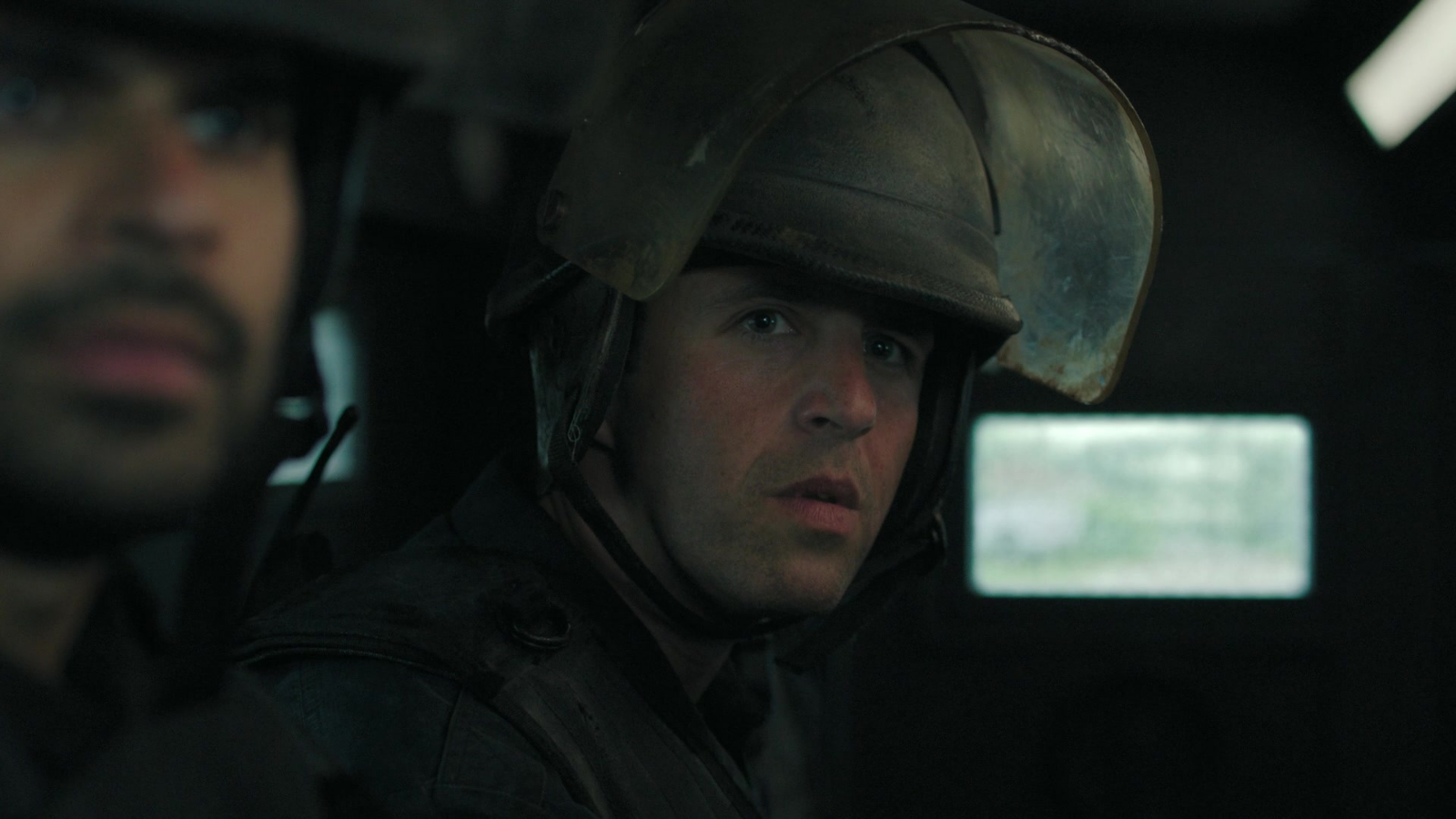
Peep that helmet. That thing is filthy. The helmet itself as well as the visor attached to it. This was the same for all of the FEDRA men in that truck. Which makes sense: FEDRA was revealed to be an organization that frequently couldn’t get the job done for itself or the citizens it supposedly protected. Perfectly spot on that we’d see their equipment be dirty. Excellent shorthand for the audience to know their reality doesn’t match their reputation.
Then there’s our introduction to the WLF
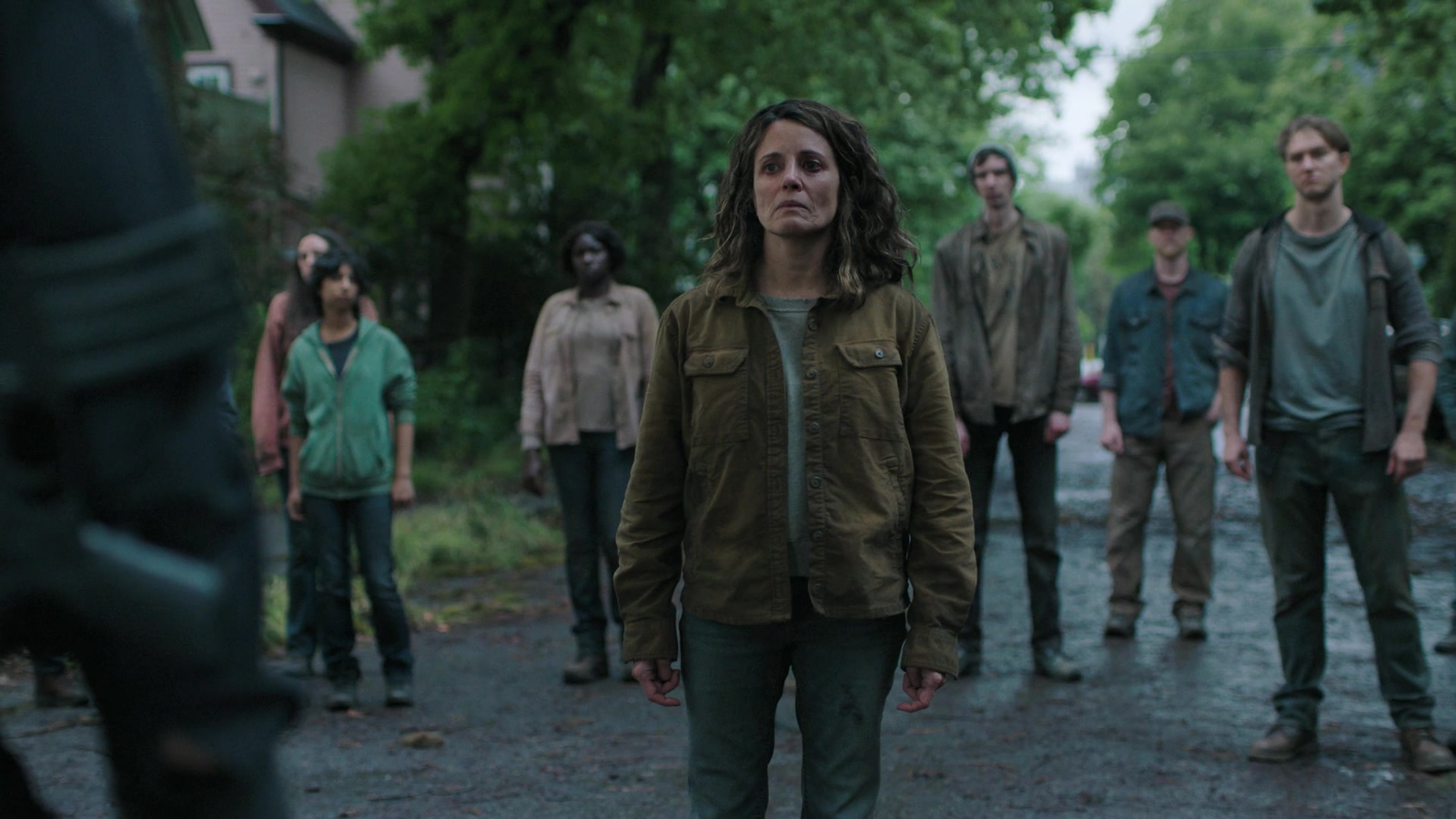
Oh wait, here’s our baggy clothes! This is the exact vibe from that Walking Dead picture we just saw. The clothes are limp, clearly affected by Seattle humidity (even though the show filmed in Canada), don’t fit like they’re molded to everyone’s body, and look dirty. At this stage the WLF is an organization struggling to get off the ground and is not yet military based. Once again, excellent visual shorthand for the audience. Perfect!
Then even when they do get uniforms, those uniforms are based off of FEDRA. Ann Foley talks about how the WLF would repurpose the FEDRA uniforms, so the WLF costumes have signs of FEDRA patches being ripped off and hand embroidered patches put on instead.
Then there’s the Seraphites.
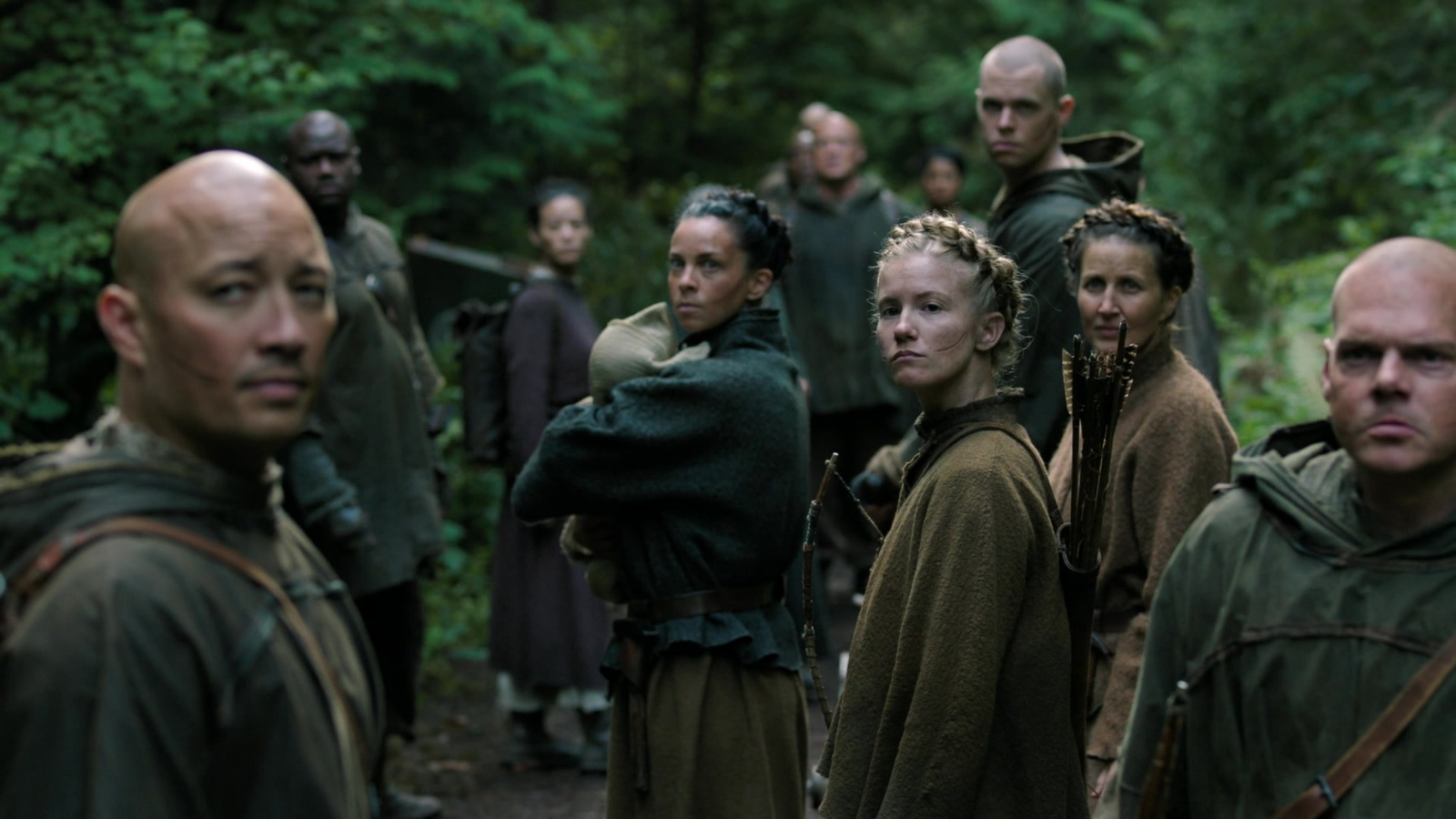
Granted you have to look closer, but the Seraphites clothing not only looks dirty but shows signs of wear. Their seams have fraying, which makes sense given that they’re using ship canvas to make those ponchos. The knitwear has baggyness where frequent wear would stretch out certain types of yarn and knitting patterns. The women have messy hair even though they're sporting braids.
The Seraphites eschew technology and make do with what they can find. They also live in the woods. Now they’ve got as much ability to wash clothing as our ancestors did (again, all you need is water, ash, and urine and even the urine’s optional) but since they live in nature in a place known for rain it makes sense that their clothing is muddy as a given. Audience gets this right away as well, perfect!
So wait, why does FEDRA, the WLF, and the Seraphites get visible dirt and mending and our main characters do not?
And here we get to my other hunch. Not saying it’s for sure my magic power, but a strongly held suspicion:
Our main characters had sponsorship.
My antenna went up when I came across this interview with Bella Ramsey in which they said Levi’s made a custom pair of jeans for them so it would fit them properly. Which is great! I am all for actors being comfortable in their clothes.
However, I said to myself there is no way Levi’s made custom jeans and said it was okay for those jeans to get ruined.
Here’s the thing, brands don’t like it when their products look bad. Apple won’t let you use an iPhone if the character is a villain or doing something irresponsible like texting while driving. Duke University and Bosch had some opinions about their brands and name being used in less than stellar ways over on White Lotus. Peloton tried to make it clear they had nothing to do with Mr Big’s death.
If you include a brand, if the brand wants to be included, odds are very high they want their product to look good. You know what doesn’t look good on a clothing brand? Signs of falling apart when you wear it.
Remember earlier when I quoted Ann Foley talking about the breakdown process and said we’d come back to it? Did you happen to notice that not only did she name drop Carhartt but also their slogan of “Built to Last”? Season two had a shit ton of brand deals both in general and when it came to clothing.
As mentioned in this article:
“it’s the surviving characters the series follows that presented even more opportunities for Foley and her team to get creative, namely in the brands they worked with.” (emphasis mine)
Notice not just brands used. Brands worked with. As in deals.
Did you also notice that the process Ann Foley described for breaking down those clothes didn’t involve actually damaging them? They could look faded, sure. Maybe even a tiny bit dirty. But nothing in the breakdown process for Carhartt clothes involved anything that included signs that the clothes could’ve naturally fallen apart in twenty five years.
Back over at Ann Foley’s Instagram we see the same thing. Levi’s gets a shout out. Dina’s jacket, Elle’s pants, and their boots all get shout outs to the brands that provided them. Again and again we see the brands were part of this process and in turn what was done to the clothing they provided was fading, not damage.
The issue of brand deals comes up elsewhere as well. I noticed it back in episode three:
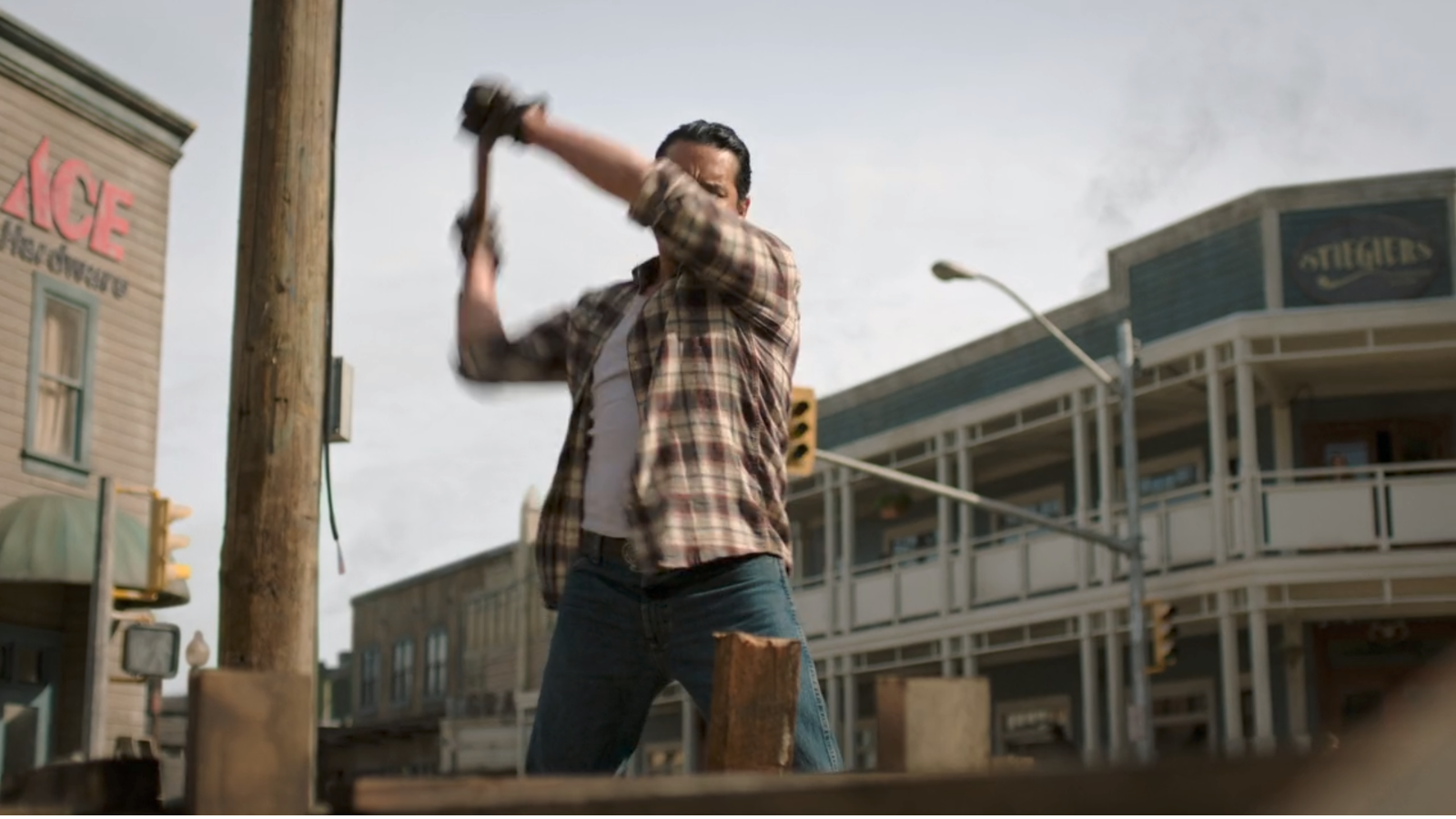
That sure is a well kept ACE Hardware sign they’ve got there in Jackson.
Look, I’m not disputing that people in the apocalypse would keep existing logos around. They’d provide a sense of comfort and familiarity. What I do dispute is that 25 years into the apocalypse they’ve not only spent time and resources to keep that logo in perfect condition but that they also keep a supply of Pantone Red: 1788 C on hand to do it. Particularly since:
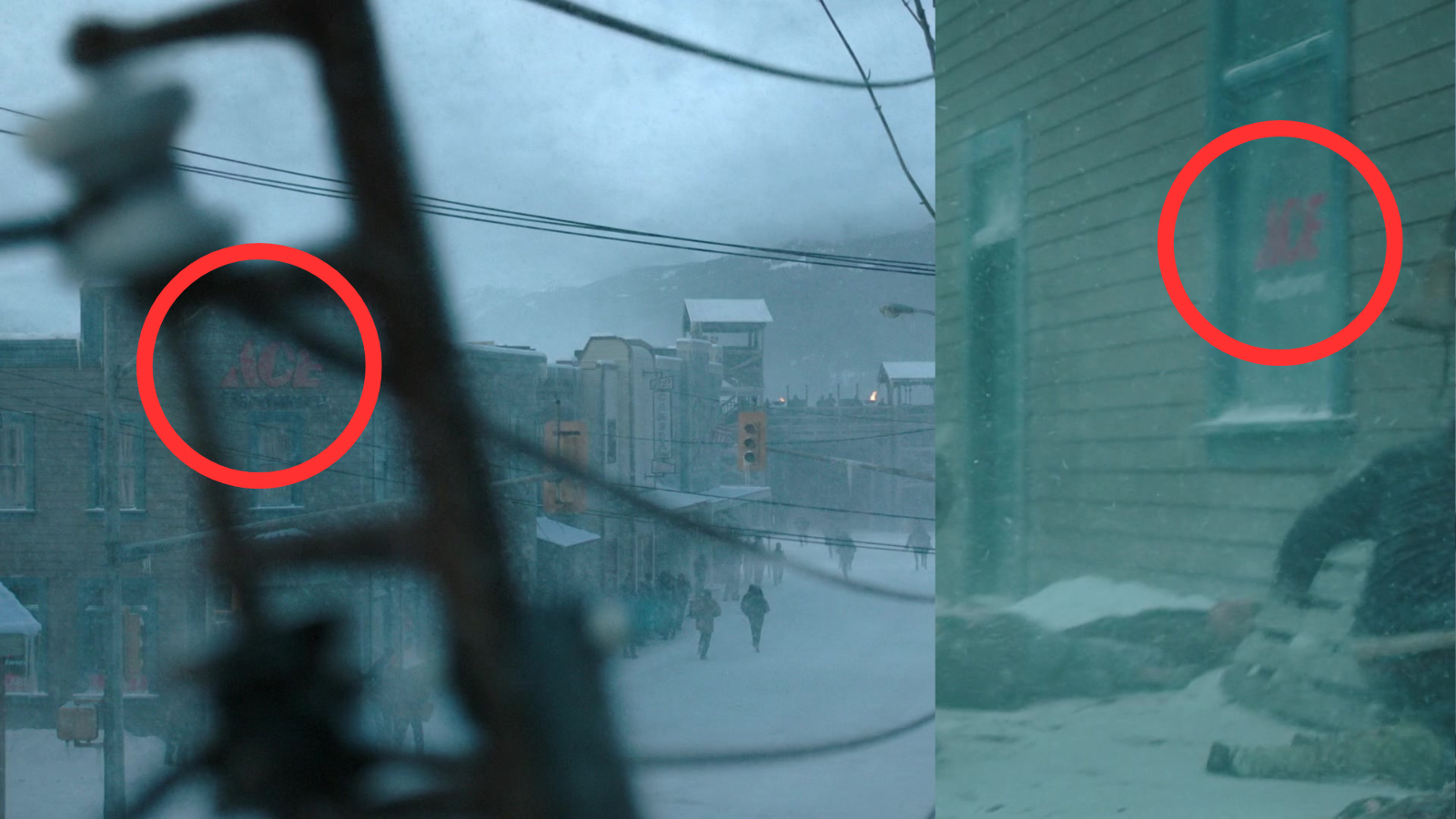
It’s not the only ACE logo in town. Wild how those are in such good condition, huh? And framed so you can see them in the shot really well too! Crazy coincidence.
By the way, if you want to fortify your city walls you know a great way to do it?
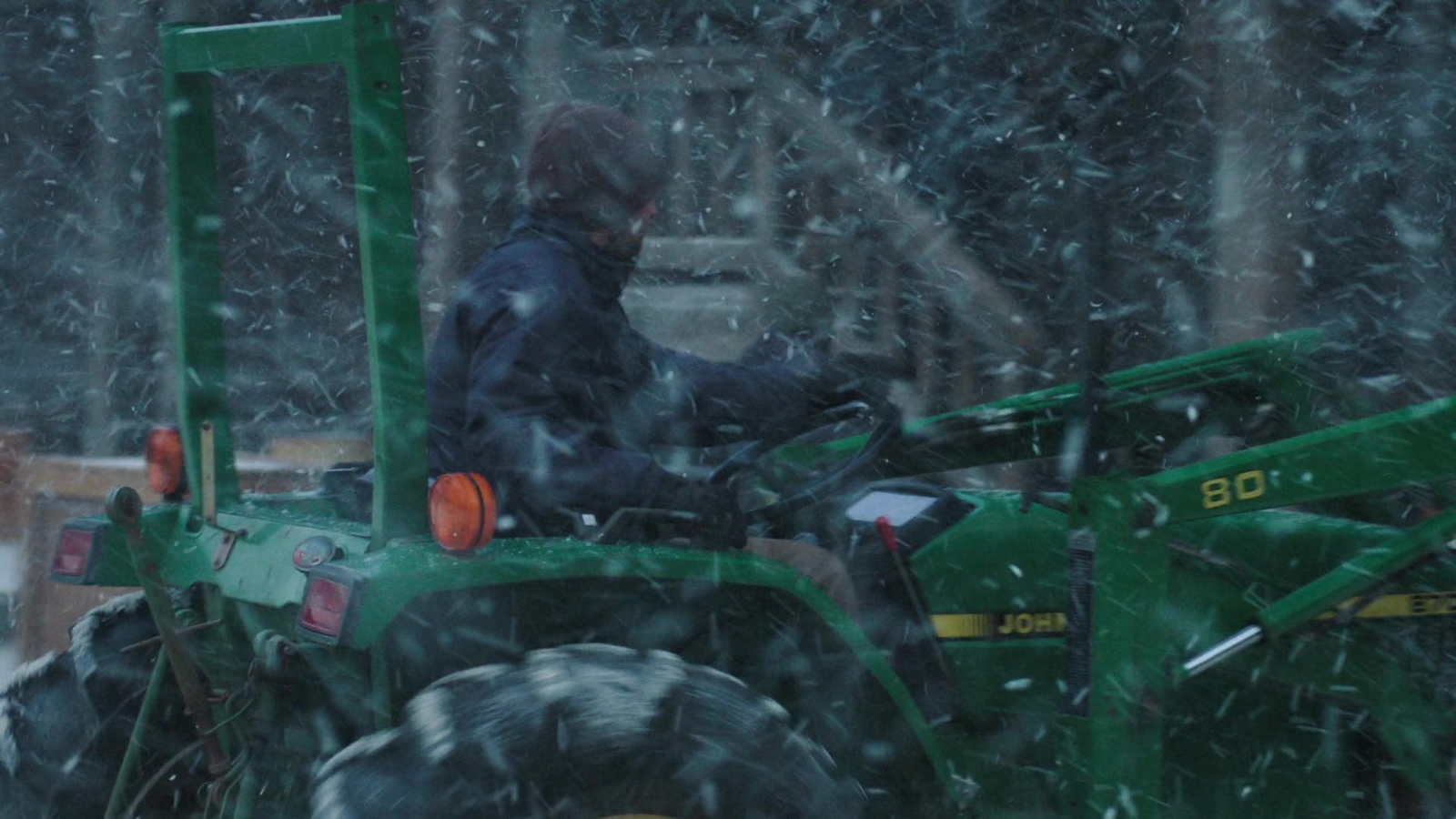
A John Deere Tractor! Also in excellent condition with not even a chip of paint out of place in 25 years of post apocalyptic working. Really thoughtful how people in Jackson made sure to keep that logo crisp and clean. Oh hey - if infected hit the exact spot on the wall you used a tractor to brace some vehicles against do you know what will move from the impact?
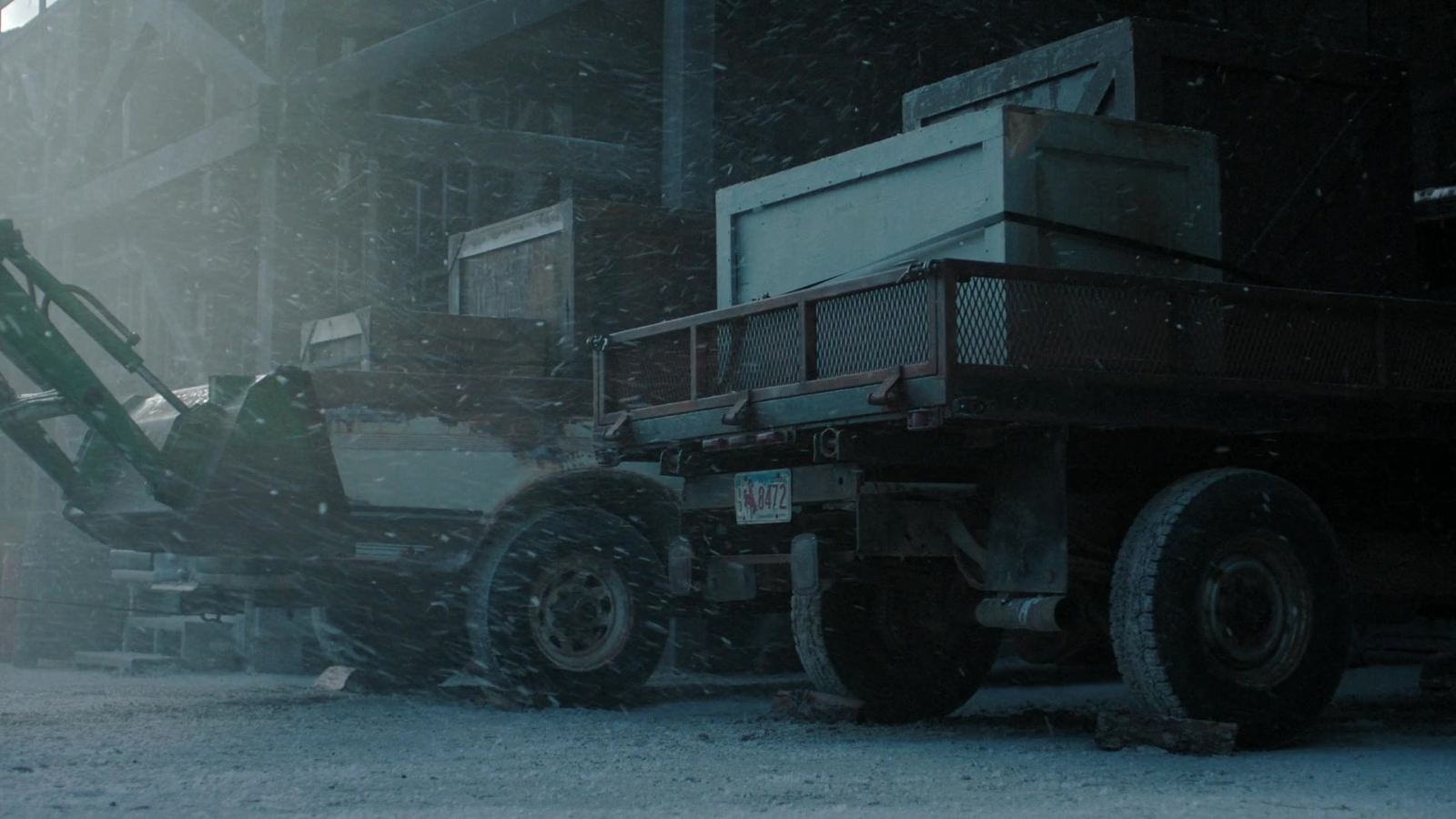
Not your John Deere tractor, that’s for sure! (And when your infected break in, they’ll be nowhere near where your tractor fortified either!)
I could go on and on with the pictures but you get the idea. When Jesse and Elle take shelter in the snowstorm they go into a clearly signed 7-Eleven. There’s a key light on a Coke machine when Ellie stealths into a room to try to escape WLF agents (which yes, means you can see the Coke machine better than you can see Ellie at first).
Joel straight up says an ad for Dremel when he gives Ellie her guitar:
”Used a Dremel to carve the, uh - Well that’s a rotary drill. Or could be a saw depending on the tip. But, actually, it’s a pretty versatile tool.”
Likewise Isaac’s far too long speech about Mauviel pots where he also name checks Williams Sonoma lifts talking points directly from the Williams Sonoma website advertising the pots.
As far as those last two go first up props to Pedro Pascal and Jeffrey Wright for managing to make ads sound like natural dialogue. And two, I’m not sure if the fact that Isaac goes on to use those pots to torture a Seraphite while specifically citing the pot’s temperature retention feature mentioned in the ad copy is a sign that they didn’t have a deal with Mauviel or that they did.
(Or if I’m impressed or frightened by the idea that Mauviel would be fine having their products used for torture so long as you didn’t get the features wrong.)
Anyway, as I say, the list of brands that showed up in season two goes on and on.
Don’t get me wrong, I have nothing against product placement. Get that cash! It’s clearly being well spent on things like 600+ costumes for a single episode. God bless, mazel tov, gotta pay the bills somehow.
Likewise brand deals aren’t new. In season one, Bill heads over to Home Depot to stock up on supplies. The bar that Joel and Tommy talk in when they first reunite is festooned with logos of various beer and alcohol brands. Earn money, anchor the visuals in the known world, I have no problem with it.
The problem is that when you can’t do anything bad to the brand items - can’t even show a speck of dust on that surviving Coke machine - it stands out. Particularly when it happens again and again and again.
This is where unfortunately Ann Foley was undercut by something she did that was good. Because she thought about things like the Seraphites using ship canvas instead of finding a raincoat warehouse, because she had WLF uniforms with FEDRA badges ripped off, it stands out more that all of our main characters have clothes that look like they came custom made directly from the manufacturer.
Because, well, other than a trip through the breakdown team to fade the colors a tiny bit, they were.
Granted, not everything is because of brands. Ellie’s shirts and everyone’s coats were made by the costume team. But to be honest that makes less sense to me.
I get why you custom make the coats and shirts, but if those are your coats and shirts why wouldn’t you take advantage of that to rough them up more? To me the parkas especially looked like they hadn’t had even a single run through a regular washing machine, let alone an involved aging process.
Moreover signs of patches and fraying seams on the coats would’ve forgiven a lot of sins in things like brand supplied pants and boots. Things from the waist up are easier to see anyway. It makes sense a thousand times over and yet it wasn’t done.
I’d love to know why. Is it that they didn’t have time? Did they not want to have the confusion of clearly worn clothes with clothes that were like new? Was it like Dina’s hair where glamour was valued over realism?
Regardless, there was a pattern that emerged with all this which was probably unintentional, but happened all the same. Once you spot it you can go back through season two and see how it’s true every single time. You could even use it, as I did, to predict the outcome of the season two finale:
Characters who were unambiguously bad and/or dying got to have dirty clothes.
Go back up and check my examples of when dirt showed up throughout the season. FEDRA, WLF, Seraphites. Not Jacksonville natives. If you were part of a group which could be stamped with the label “THE BAD GUYS” you were allowed not only dirty clothes but filthy clothes. Why? Probably because those characters, because they’re bad, aren’t wearing anything that a brand provided.
And as I say, watch that finale with this rule in mind and then wince when Jesse, who showed some dirt, ends up dead on the floor. Heck, even Tommy who doesn’t die but gets shot got to show a little wear and tear before it happened. (Dina, who got hit with an arrow earlier, just has a bandage wrapped around her thigh. We don’t see much of how damaged her nice jeans got.)
Which is a bit of a problem, because in The Last of Us, both game and show, you’re not supposed to know who the bad guys are. There isn’t a the bad guy. It’s people in bad circumstances who decide if they’re going to do bad things.
Part of the point of both stories is how much can you feel empathy and even agree with someone who goes on a murder spree for what that person feels is the right reason. You can’t tell that story if the visuals of that story repeatedly tell you who the no question no doubt absolute evil people are.
You may not know if Smoke or Stack has the Irish suit. You may not even know that it is an Irish suit. But you know those suits make you feel some kind of way, and oh look a bunch of Irish characters just showed up.
And that is what went wrong with the costumes on season two of HBO’s The Last of Us.
Lagniappe
As always, things that don’t fit anywhere else:
- You don’t want to get me started on the likelihood of brand new jeans in the apocalypse. I’ll spot you cotton crops but who the hell is growing and harvesting that indigo?
- On the topic of needing brands, while I’m firmly on the side that it makes sense for there to be known brands in the world, it’s worth noting you don’t actually need them to get that sense of familiarity. There are prop houses that will build you an entire bodega with things that look familiar but aren’t actually made by any brands. Care for a bag of Let’s potato chips, anyone?
- If you look at Ann Foley’s IMDB page you’ll not only see that her background is in a lot of superhero/scifi shows but that even her sizzle reel (as of me writing this in summer 2025) is a little bit HBO’s The Last of Us and a lot of shot after shot of “Person in a tactical bodysuit posing like a cool person.” I can’t help but wonder if working on so many shows like Agents of SHIELD and others where the emphasis was on making the actors look badass was an unconscious influence on why so many of the main characters in season two didn’t look bad. Not that Ann Foley was personally in charge of Dina’s beachy waves, but maybe it was a factor in why none of the in house coats got any wear and tear.
- Spoilers for Sinners abound, but if you want to hear about how a god of costume design tackles the issue of the need to get dirt and wear and tear on clothes, you can check out this interview with Ruth E Carter. One of the things she points out is that the need to damage the clothes means you have to make them. Because if you’ve borrowed them from a brand or rented them from a warehouse you have to return them in good condition or pay a steep cost. Again, unfair to compare anybody to Ruth E Carter but it does go to show how it’s a miss that Ann Foley and her team knew to do ripped patches on repurposed FEDRA uniforms but nobody thought to pop some seams on an in house parka.
- When I was putting together the graphics of this article I ended up with over 34 pictures of logo and product placement before I made myself stop. Once you realize season two in particular had a lot of them it’s like a magic eye painting the way they pop out in both the visuals and the dialogue. As you can see I did cut back in the final version but woof.
- To be clear: nothing wrong with product placement and nothing wrong with brand deals if you ask me. What messes it up is when the people working behind the scenes don’t realize they’ve created accidental messaging. “Enjoy an ice cold COKE! Oh and also Ellie just killed a dude.” isn’t strong storytelling.
- I am seriously dying to know if Mauviel was actual sponsorship. I mean if Craig Mazin didn’t get some cash for putting those Williams Sonoma bullet points directly into the script what is he even doing as showrunner? That being said, it is hilarious that part of why Isaac talks too damn much is he’s actually reading ad copy.
- Still no excuse for Gail to be running around a frontier post-apocalyptic town with high heels though. Not unless they got a sponsorship for that too. (Which, having written that, maybe they did.)
And there we are. Again mad props to Ann Foley and her team. They truly did great and thoughtful work. There were a couple of things that undercut it but I suspect that’s not their fault. There’s definitely way worse shows out there.
Also go watch Sinners. You won’t regret it.
Thanks for reading!


